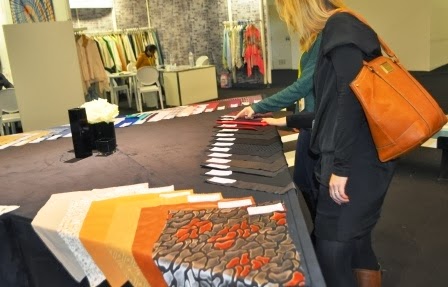 |
| Image courtesy of Swarovski. |
One of Swarovski’s latest crystal beads from its Spring/Summer 2015 collection is in the shape of a human skull. The new Skull bead was inspired by the decorative symbols of Mexico’s Day of the Dead, according to Swarovski, but one can think of other influential figures in the world of fashion and art from where inspiration may be drawn, such as Alexander McQueen naturally, and Damien Hurst. Both have featured the human skull famously in their work.
At a recent presentation event hosted by Swarovski Elements in London last week, a demonstration was also made to show how simple elegant
bracelets can be made by stringing together two skull-shaped crystal
beads and a series of round Crystal Pearls which come in various shades. Swarovski’s Crystal Pearls are
a perfect replica of genuine pearls, explained the Austrian house, as they are
similar in weight and behaviour. Both adjust
to the temperature of the skin and are resistant to rubbing, scratching,
perfume, perspiration and UV light.
While you can also go to the Swarovski website (click HERE) for instructions on how to create the Sparkling Skull Bracelet, here below is a step-by-step guide that any beginner can follow. In addition to the Swarovski beads, you will need glue, a piece of transparent stretchable beading cord ( Ø 0.5 mm, 40 cm), a beading needle, and
scissors.
The version shown here differs slightly from
Swarovski’s original shown in their website as it also features an extra bead being inserted between the two
skull beads to give the skulls more prominence.
And by doing so, a butterfly motif is also formed.
Step 1:- Cut a 40 cm length of stretchable beading cord, and string together seven or eight Swarovski Crystal Pearls (here 10 mm Crystal Bordeaux Pearls are used), and two Crystal Skull Beads (13 mm Crystal AB). Make sure that the skulls face at opposite direction (as shown) and then seven more Swarovski pearls – adjust the number as needed around one’s wrist.
Step 1:- Cut a 40 cm length of stretchable beading cord, and string together seven or eight Swarovski Crystal Pearls (here 10 mm Crystal Bordeaux Pearls are used), and two Crystal Skull Beads (13 mm Crystal AB). Make sure that the skulls face at opposite direction (as shown) and then seven more Swarovski pearls – adjust the number as needed around one’s wrist.
Step 3:- Place a small amount of glue directly on the knot. Thread the ends together and insert them back through one of the Swarovski Crystal Pearls using a beading needle. Also place a small amount of glue on the elastic cord directly after the knot (approximately 5 mm) before pulling it tight into the pearl. Cut the excess cord off.
For other design ideas, go to Swarovski Element's "Creat Your Style" web-page. Click HERE.
Photos by Lucia Carpio for My Fashion Connect.

















































